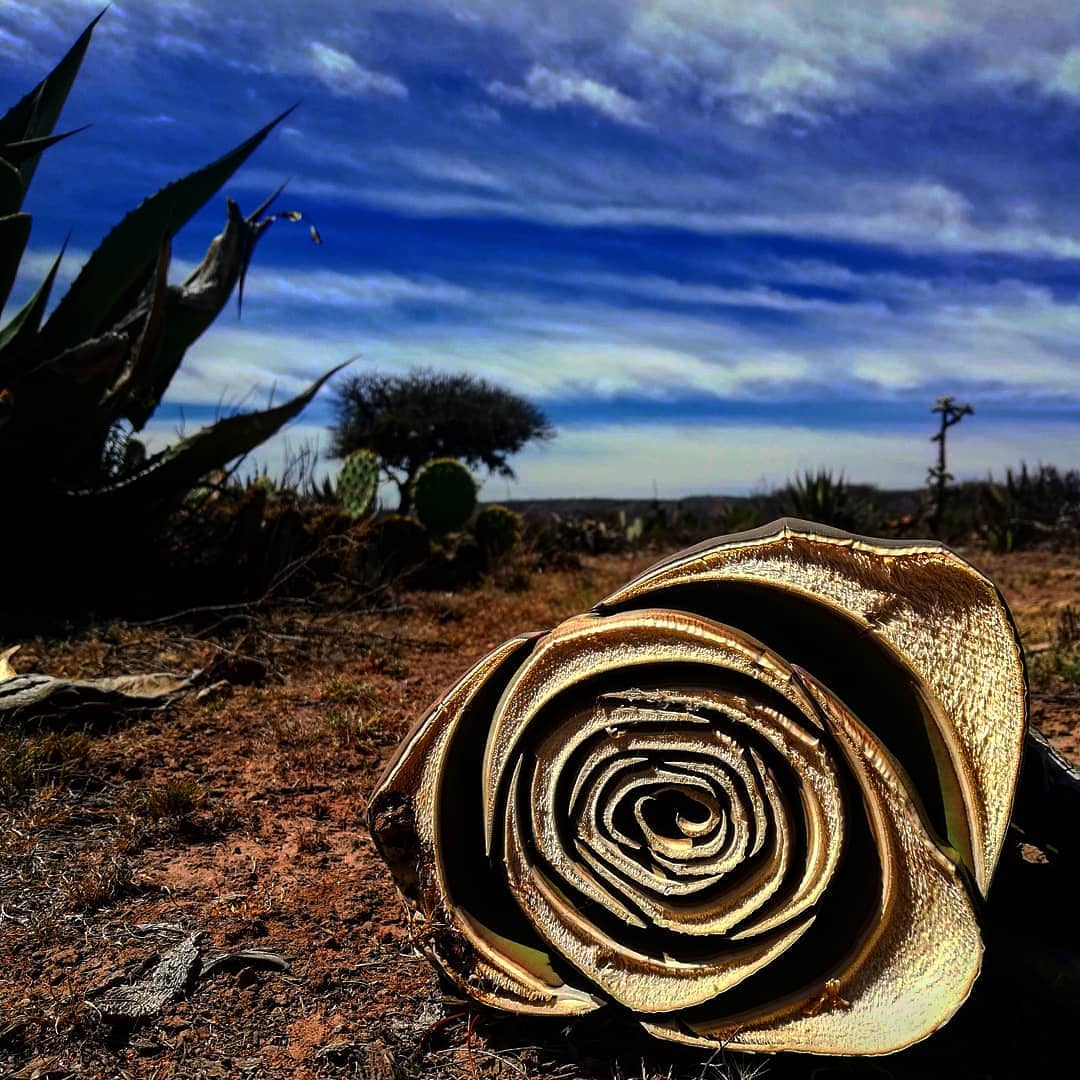
Mezcal Route in San Luis Potosí
Introducing the Mezcal Route in San Luis Potosí, a project supported by local communities whose passion will fill your heart.
The mezcal of San Luis Potosí is delicious. When you visit its tabernas, you’re supporting the communities that make their living from growing maguey and making this ancient beverage. Have you traveled San Luis Potosi’s Mezcal Route yet?
When they told me that I was going to San Luis Potosí, I never imagined the diverse ecosystem I would be privy to as we drove down the highway to Palmar Segundo in Mexquitic de Carmona.
We headed up into the mountains where the first Spanish settlement in the state of San Luis Potosí is located, formerly known as San Miguel de Mexquitic.
Do you want to travel to San Luis Potosí? Clic here
The Sierra Madre Oriental and the Sierra Madre Occidental run parallel, meeting in the middle of the state to form the center of the transversal volcanic belt that creates a high-altitude cone. This is the Great Chihuahua Desert, bordered on the south by San Luis Potosí. It makes San Luis Potosí the place with the highest concentration of cactuses in the world.
Agave
The Agave salmiana used for mezcal production in San Luis Potosí is completely wild.
It has a life cycle of 6 to 10 years and can be reproduced in two ways:
- Asexual (cloning): When the plant reaches a certain age, its roots change their information and instead of growing downward, start to grow upward.
- Sexual: The succulent offshoots grow in rosette shapes and the leaves grow around the center, reaching a point where instead of growing leaves, they start to form an asparagus-shaped blossom that serves for sexual reproduction: these little flowers are full of nectar, which attracts bats that help pollinate them.
When the plant dies it serves as fertilizer for the offshoots that grow up afterward.
The Mezcal Harvest
To harvest mezcal you have to interrupt the plant’s sexual reproduction: when it has stopped growing leaves and the asparagus-like shoot has formed it gets cut or dug out. After a year, the agave will be ready to produce mezcal.
The Importance of Reforestation
Local communities have the tradition of planting offshoots or young agave to help the plants to keep reproducing.
Would you like to go to this destination? Clic here.
3 Types of Mezcal
According to Mexican regulations, there are 3 types of mezcal:
- Ancestral: using rudimentary technology that goes back to Mongolian distillation processes that reached Mexico through the old Manila Galleon trade route.
- Artisanal: using copper alembic stills imported by European missionaries.
- Industrial: modern technological applications that use stainless steel distillation towers.
The Journey
Our first stop is to see the process of ancestral mezcal production. Upon reaching the town we were greeted by a mural depicting mezcal masters Pedro and María de la Luz at Palmar Segundo in Mexquitic de Carmona.
María de la Luz is the only active female mezcal master in this community and all of San Luis Potosí. She comes from a long line of women mezcal masters who have supported their spouses’ work. In San Luis Potosí, places where they produce mezcal are known as tabernas (taverns).
The Mezcal Process
At Daniel’s taberna we checked out all the different tools for making artisanal mezcal.
The process for making mezcal involves harvesting the agave plants, which are left in place and later taken to the taberna.
Cooking
Next, they are cooked for 12 hours to make them apt for human consumption. This requires a volcanic rock oven. The word mezcal means “cooked agave” in Nahuatl.
Left to Sit and Ferment
Once cooked, the ovens are uncovered and left to sit for 72 hours. Later, the plants are milled to extract all the juices. They are taken to the small vats where microorganisms, yeast, and sugars go to town during fermentation.
Distillation
Once the juices have fermented, they are poured into an underground pot that is heated to a boil in order to create steam. Next, using a caperote (bottomless cylinder) the steam is directed to the copper pan filled with cold water to cause condensation. The droplets gather in the middle and fall onto a bell-shaped campanilla (copper pan). We eagerly participated, awaiting the chance to try the different varieties of La Campanilla mezcal.
La Flor
To see the difference between the artisanal and ancestral production methods, we headed to La Flor in Ipiña, Ahualulco, San Luis Potosí. La Flor production facility wouldn’t exist without the town and vice versa.
We witnessed the first part of the mezcal production process—cooking—and noted that what sets ancestral mezcal apart is the use of underground ovens. Artisanal mezcal uses above ground structures and elevations. Industrialized mezcal is made with more modern processes.
Residents of Ipiña station make up the plant’s workforce. They work as a community to carry out the work, sharing the earnings. The division of labor at this plant is organized into groups who:
- carry tools and go into the wild to clear areas
- load and unload the truck
- set up the ovens
- mill the plants
- oversee fermentation
- carry out distillation
Locals organize in accordance with availability. Rural communities that grow their own crops control their own time. Additionally, they divvy up and rotate processes in order to work harmoniously. Supporting these projects is vital to their survival. Sustainable and community-minded are two words that describe our trip on the San Luis Potosí Mezcal Route.
Head to Escape to México
